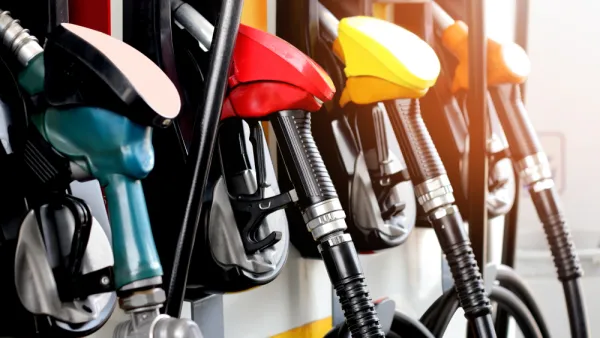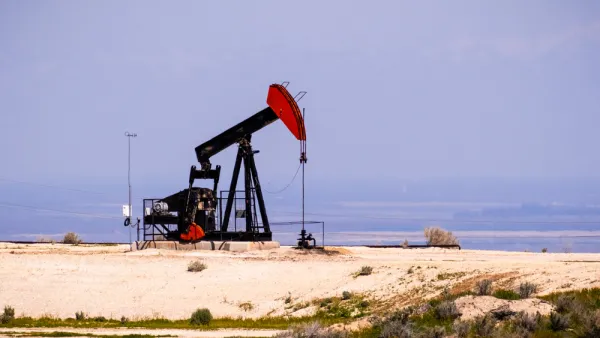The current U.S. record is 10 million barrels per day set in 1970. Last year averaged 9.2 million b/d. Experts believe that record will be reached this spring, if it hasn't already. Can Trump claim credit for the surging production?

President Trump falsely took credit for no consumer passenger jet fatalities in 2017, so undoubtedly he will claim credit for the predicted oil production record. However, it comes down to technology (e.g., use of hydraulic fracturing and horizontal drilling) and markets, not his numerous regulation rollbacks, which increase emissions and threaten health and safety (think Deepwater Horizon).
"[It] has nothing to do with who is in office," states Tom Kloza with Oil Price Information Service.
"Prices generally determine when oil companies drill, not presidents," writes (and states in audio version of article) Jeff Brady, energy correspondent for NPR. And "prices for crude oil are nearly double what they were two years ago." In fact, at $60 per barrel, they were at "the highest end-of-year price since 2013," according to the Energy Information Administration (EIA), a division of the U.S. Department of Energy.
EIA "forecasts total U.S. crude oil production to average 9.2 million b/d for all of 2017 and 10.0 million b/d in 2018, which would mark the highest annual average production, surpassing the previous record of 9.6 million b/d set in 1970," notes their Short Term Energy Outlook of Dec. 12, 2017.
Kloza predicts the new production record will be set this spring, writes Brady. "Others believe the U.S. might already produce 10 million barrels a day."
"We think that during December, that mark was actually reached," states Per Magnus Nysveen, an oil market analyst with the Norwegian firm Rystad Energy.
This disagreement will be settled when official federal production numbers are out at the end of February. After that, Nysveen predicts U.S. crude production will surpass Saudi Arabia and Russia.
Actually, U.S. shale oil producers (which use fracking) have those two nations to thank for the increase in oil prices due to their agreement in November to reduce production through the end of 2018, reports Matt Egan for CNN Money on Jan. 3.
"Production hit 9.58 million barrels per day in May 2015 before prices dropped because of an oil glut," reports Thomas Heath for The Washington Post on December 31, 2017. The oil glut resulted from a November 2014 decision by OPEC to retain market share, and thus not cut back on production as Saudi Arabia had traditionally done.
The booming U.S. oil production is shrinking oil imports, according to Rystad Energy's report, released December 29, 2017:
US oil imports are shrinking to new lows while oil exports are increasing. The petroleum trade deficit in the US [is] at merely 2.5 million barrels per day when looking at all types of petroleum liquids. This deficit has fallen steeply from a peak of 12.5 million barrels per day in 2007.
For those more concerned about reducing emissions than increasing oil production, NPR's Brady reports that "U.S. cars are more fuel-efficient, and overall demand is flat," which is good news for those driving gas and diesel-powered vehicles: "[It's] unlikely there will be any dramatic gas price increases in the near future," he adds.
FULL STORY: Drillers Are Optimistic As U.S. Oil Production Booms

National Parks Layoffs Will Cause Communities to Lose Billions
Thousands of essential park workers were laid off this week, just before the busy spring break season.

Retro-silient?: America’s First “Eco-burb,” The Woodlands Turns 50
A master-planned community north of Houston offers lessons on green infrastructure and resilient design, but falls short of its founder’s lofty affordability and walkability goals.

Delivering for America Plan Will Downgrade Mail Service in at Least 49.5 Percent of Zip Codes
Republican and Democrat lawmakers criticize the plan for its disproportionate negative impact on rural communities.

Test News Post 1
This is a summary

Test News Headline 46
Test for the image on the front page.

Balancing Bombs and Butterflies: How the National Guard Protects a Rare Species
The National Guard at Fort Indiantown Gap uses GIS technology and land management strategies to balance military training with conservation efforts, ensuring the survival of the rare eastern regal fritillary butterfly.
Urban Design for Planners 1: Software Tools
This six-course series explores essential urban design concepts using open source software and equips planners with the tools they need to participate fully in the urban design process.
Planning for Universal Design
Learn the tools for implementing Universal Design in planning regulations.
EMC Planning Group, Inc.
Planetizen
Planetizen
Mpact (formerly Rail~Volution)
Great Falls Development Authority, Inc.
HUDs Office of Policy Development and Research
NYU Wagner Graduate School of Public Service




























